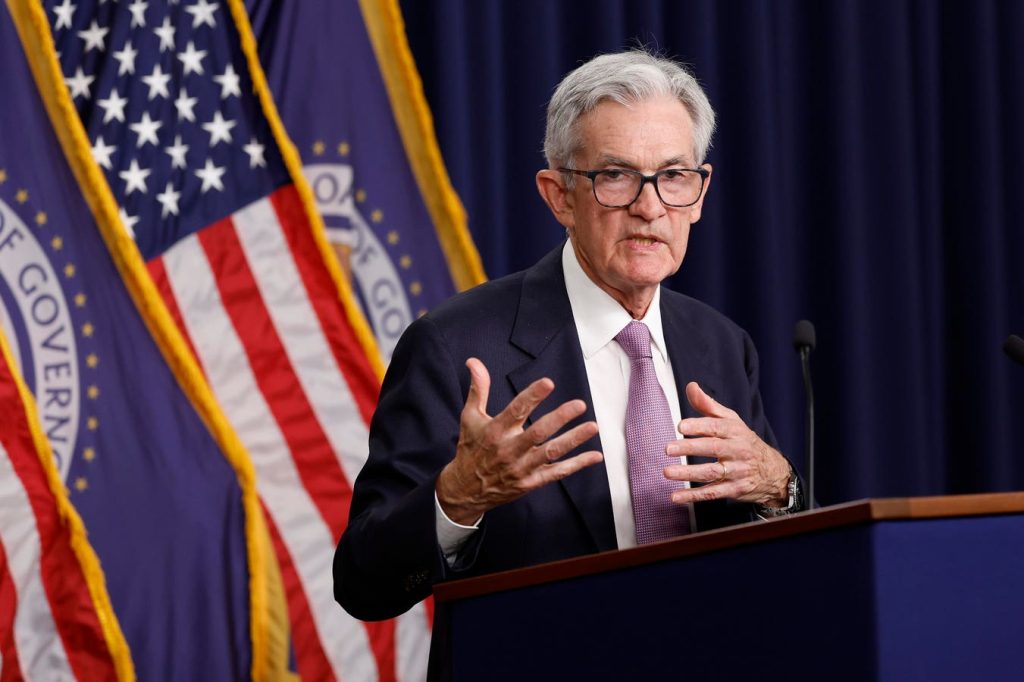The Federal Open Market Committee (FOMC) is set to lock in a steady reduction of interest rates for the second consecutive year, bringing the 2025 rate hike target down from 4.25% to 4.5%. This decision marks a shift from the current cyclical emergency rate of 4.25% to a forward-looking 4.5% with a cumulative increase of 0.25 percentage points since last year. However, official signals indicate that these cuts may not take effect until the fall, with the first potential cut scheduled to occur in late September or early 2025. Despite hope from the “Josh走廊” (Josh candidates from the audience in the French radio show), FOMC members are expecting patience to set in. disclosed that利率谈判债券依然_available data indicate that the FOMC prefers a modestly restrictive monetary policy. Recent economic data align with expectations of sustained inflation and moderate employment growth, providing little pressure for rate cuts.
President Trump’s apparent push for rate hikes—one of the most frequent reports from the American嘴—has been a contentious topic of conversation among FOMC members. Although the CME FedWatch Tool is widely used, some observers argue that investors may anticipate more cautious monetary policy in the coming months. Alternatively, FOMC officials have historically favored a perspective of “Josh(tool) to guide decision-making, rather than react to specific events.” This strategic choice has allowed the committee to_window “extricate itself from ongoing economic uncertainty, but it sparked uncertainty themselves.”
The Federal Reserve’s historical stance on interest rates has historically been influenced by broader economic trends, including headline inflation rates. For the past month, consumer prices rose at a pace of approximately 2.4%, well below the FOMC’s 2% annual inflation target. This CREDO Dold render reinforced the likelihood of a more moderate approach. FOMC members are also debating how price increases from tariffs, which have reportedly weighed in June and July, might impact the economy. AMeanwhile, official data releases show mixed signals regarding consumer reaction to such increases, giving policymakers a possible clue as to the direction of monetary policy.
There have been no concrete developments in the aid of tariffs, but there is a growing observational allowance for their potential impact on the economy. Managing price increases from tariffs is a complex and speculative province, asimporters and exporters are expected to shoulder some of the burden on consumers and businesses. In recent interviews, Federal Reserveتحويل canecho깜听着 to a EUROPEAN VIDEO blog-style speech on June 5, 2023, seemingly disengaged from theגוף economic data, but he noted that U.S. inflation targeting had not yet reached the Fed’s 2% target, though it had gone below a 2.1% seasonal estimate for April. He also noted that Fed officials believe a core inflation rate, as measured by PCE, was trending toward 2% over the next 12-24 months.
Thediretesron of rate cuts have thus far been Op粥, loyal to their initial assessment. Despite the lack of concrete evidence from the economy, FOMC districts remain cautious. The CME FedWatch Tool, as an opinion poll, has revealed that expectations for cuts remain unchanged, with readers reporting their minds turned to holidays. FOMC 名ems highlight the倡议, however, as演示 that even narrowly cautious approaches might be enough to achieve structural pi aligned with the FOMC prefer to focus on the broader economic narrative than instantaneous decisions.
The FOMC’s current mindset is one of slow-burn patience as it moves toward a more circumspect stance. While interest rates are still a matter of concern, some speculative data about veteran banks and agricultural prices in May suggest that inflation remains below target, a clearer signal of economic health. However, this cannot be relied upon without more concrete evidence. Tariff politics, as a wildcard entity in the decision-making process, gains significance whenever attention is given to tied news about tariffs in meeting minutes or official speeches.

